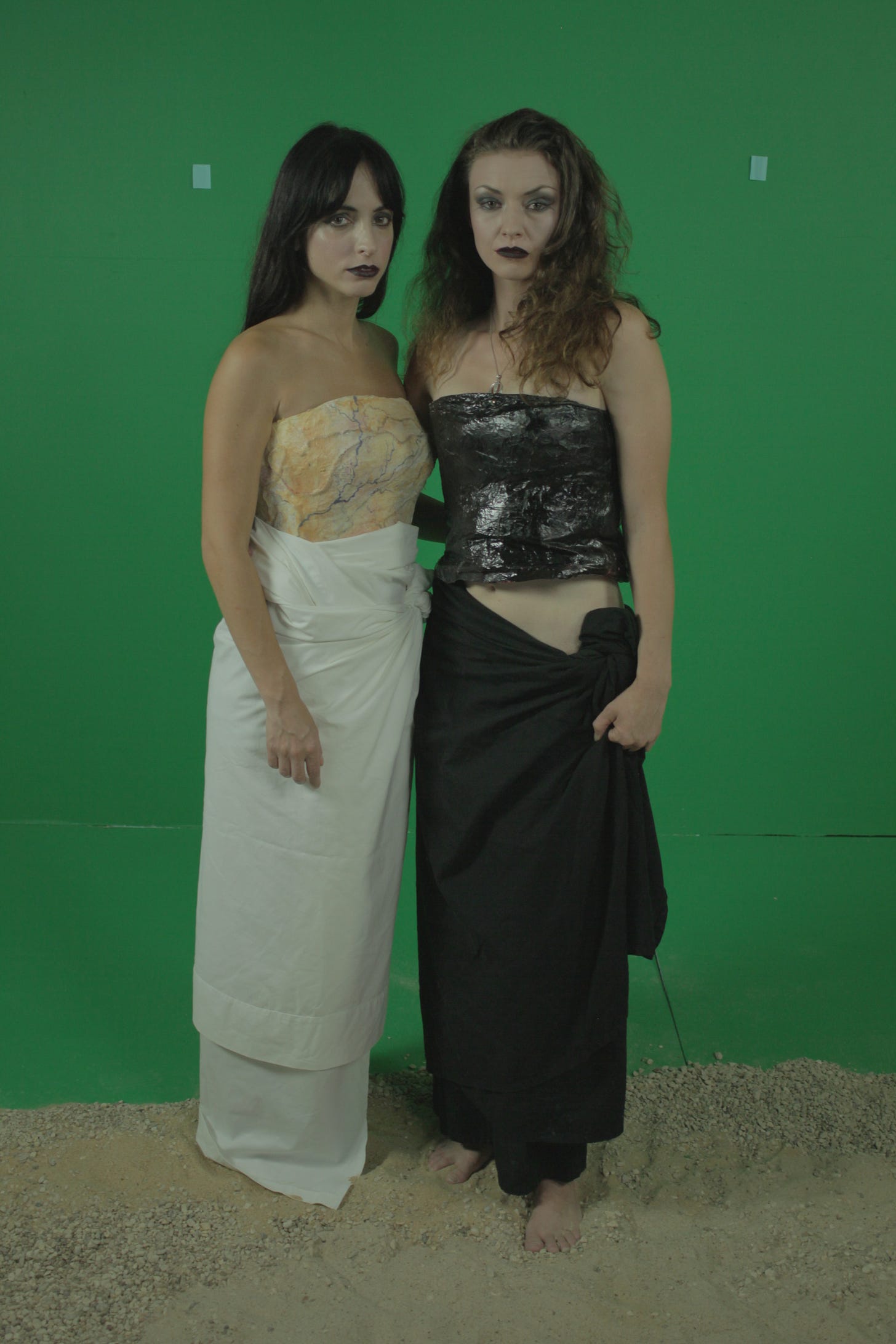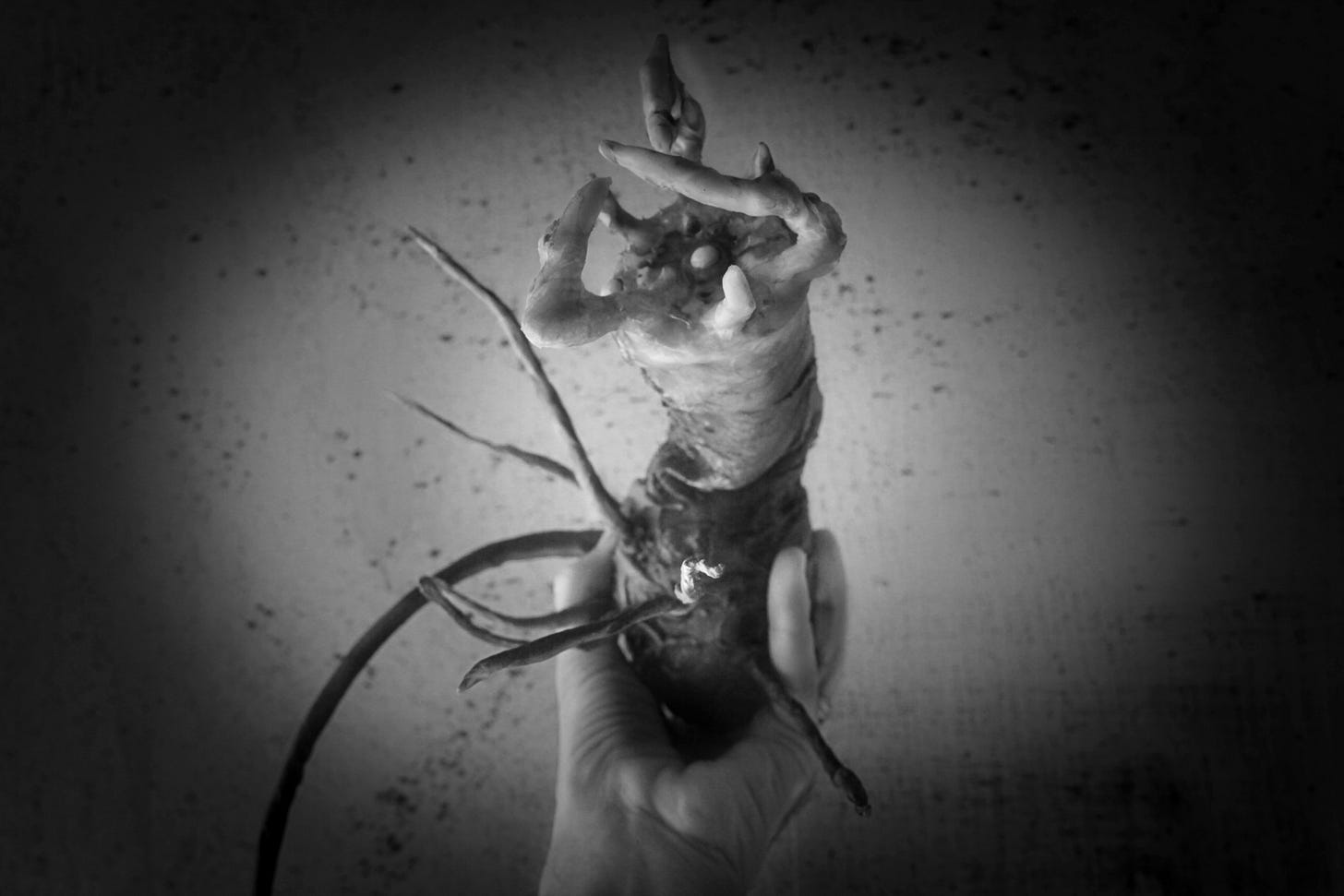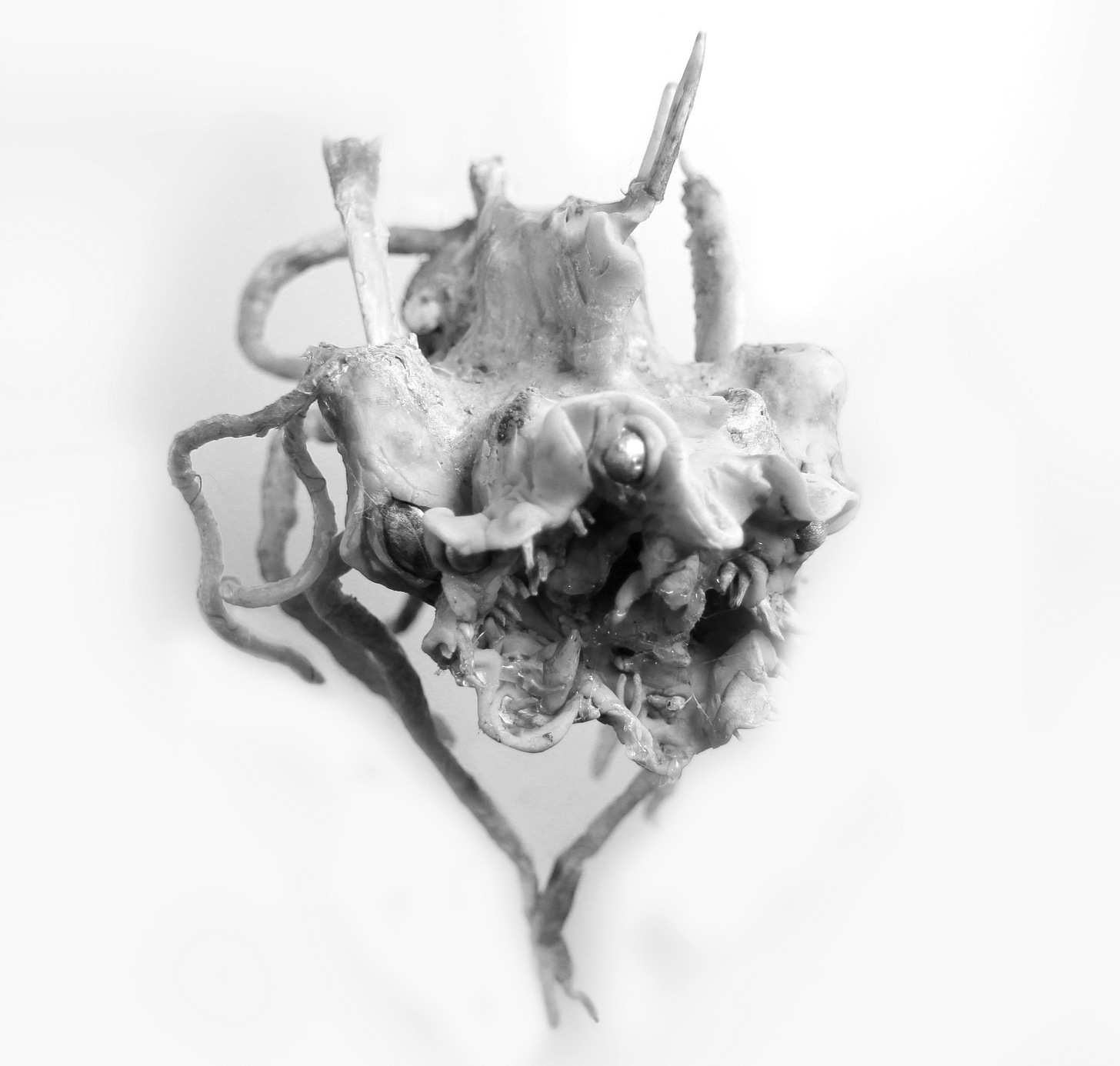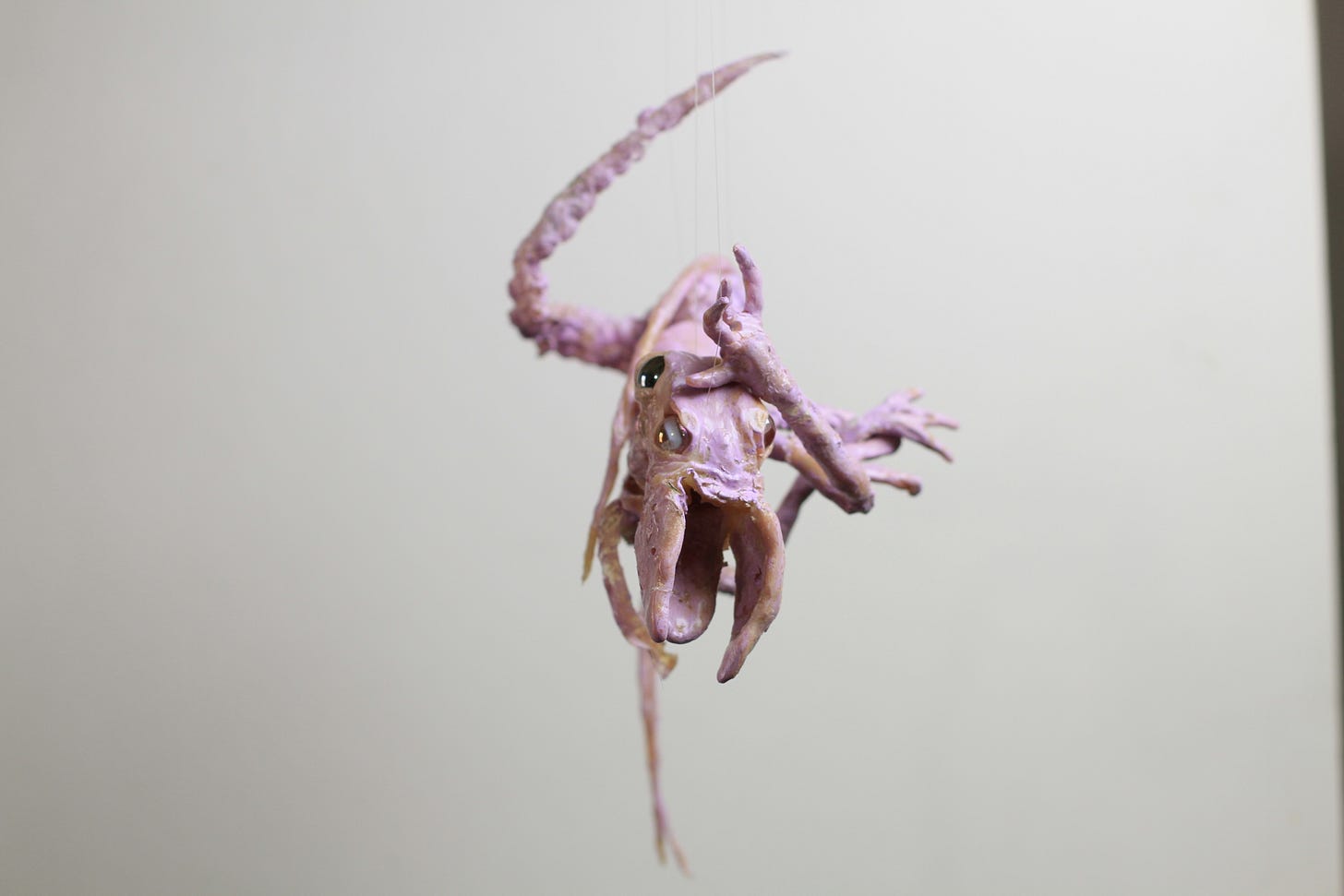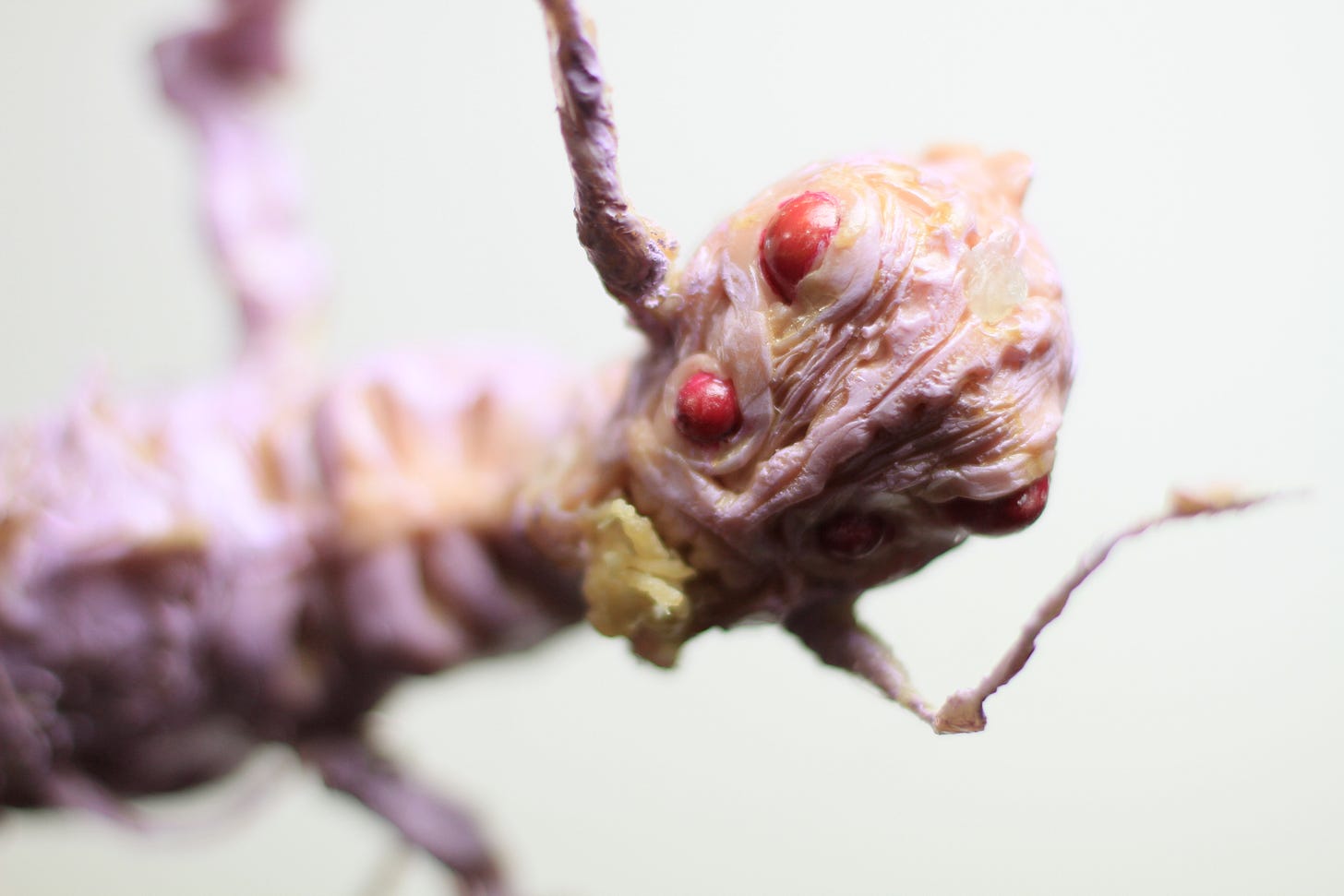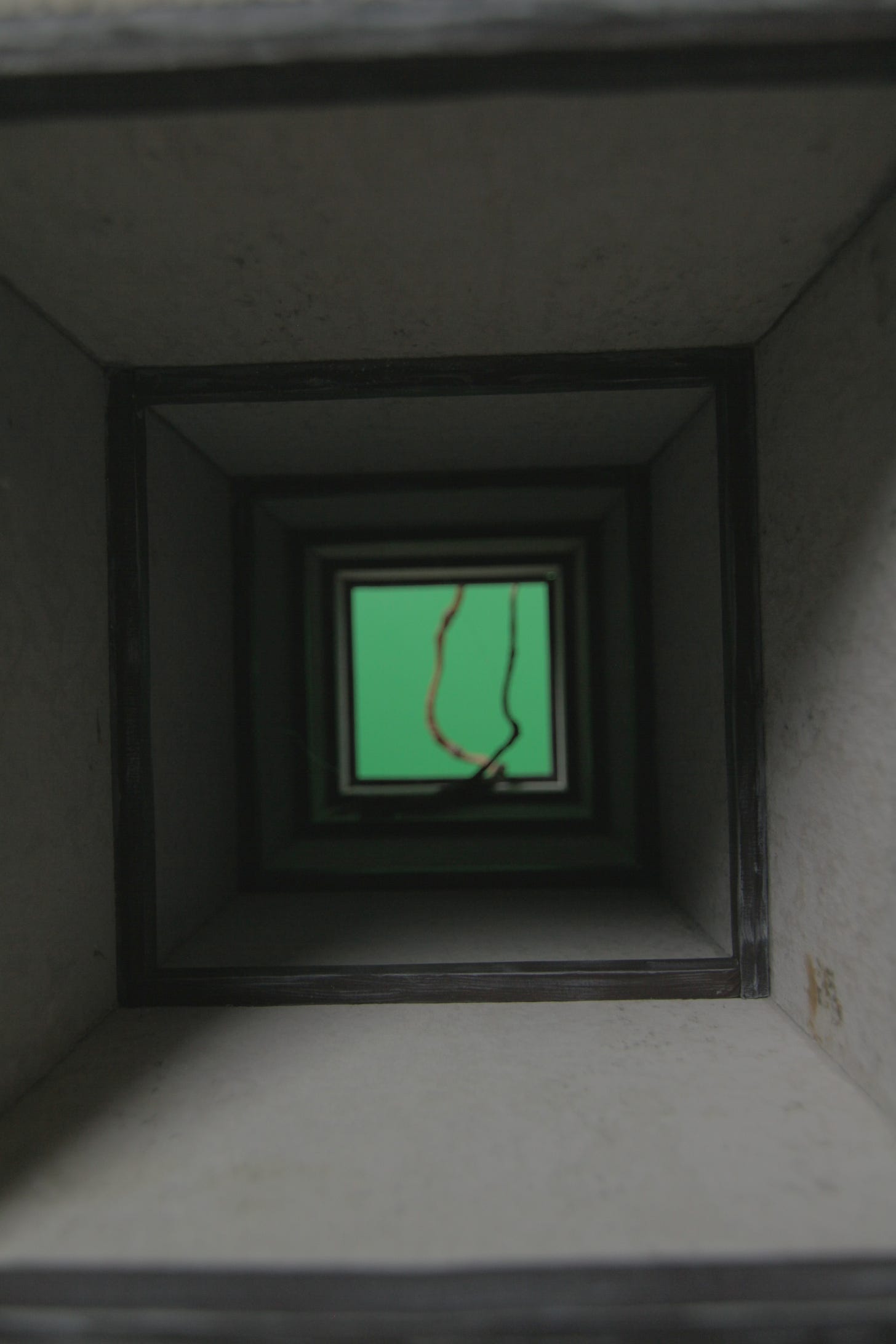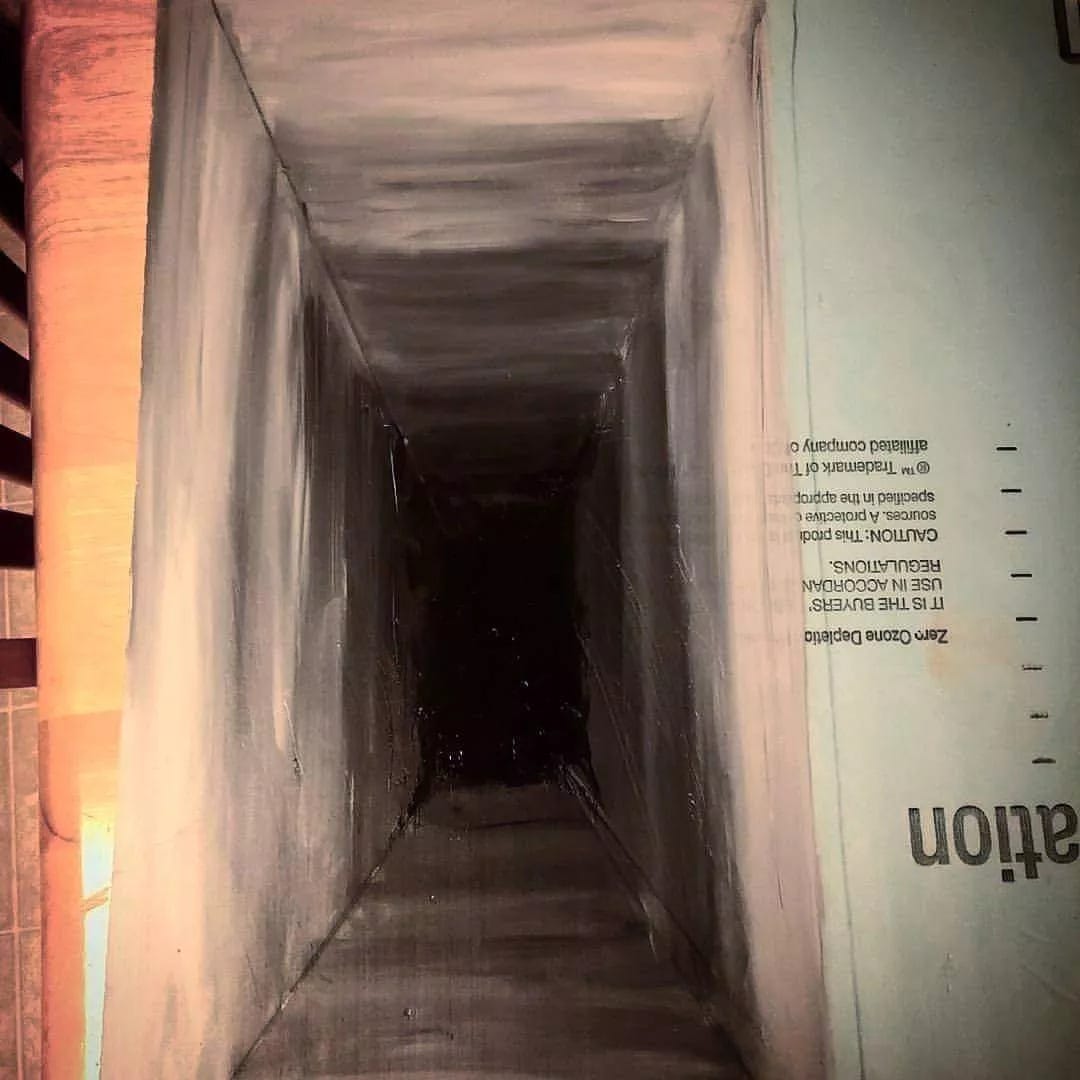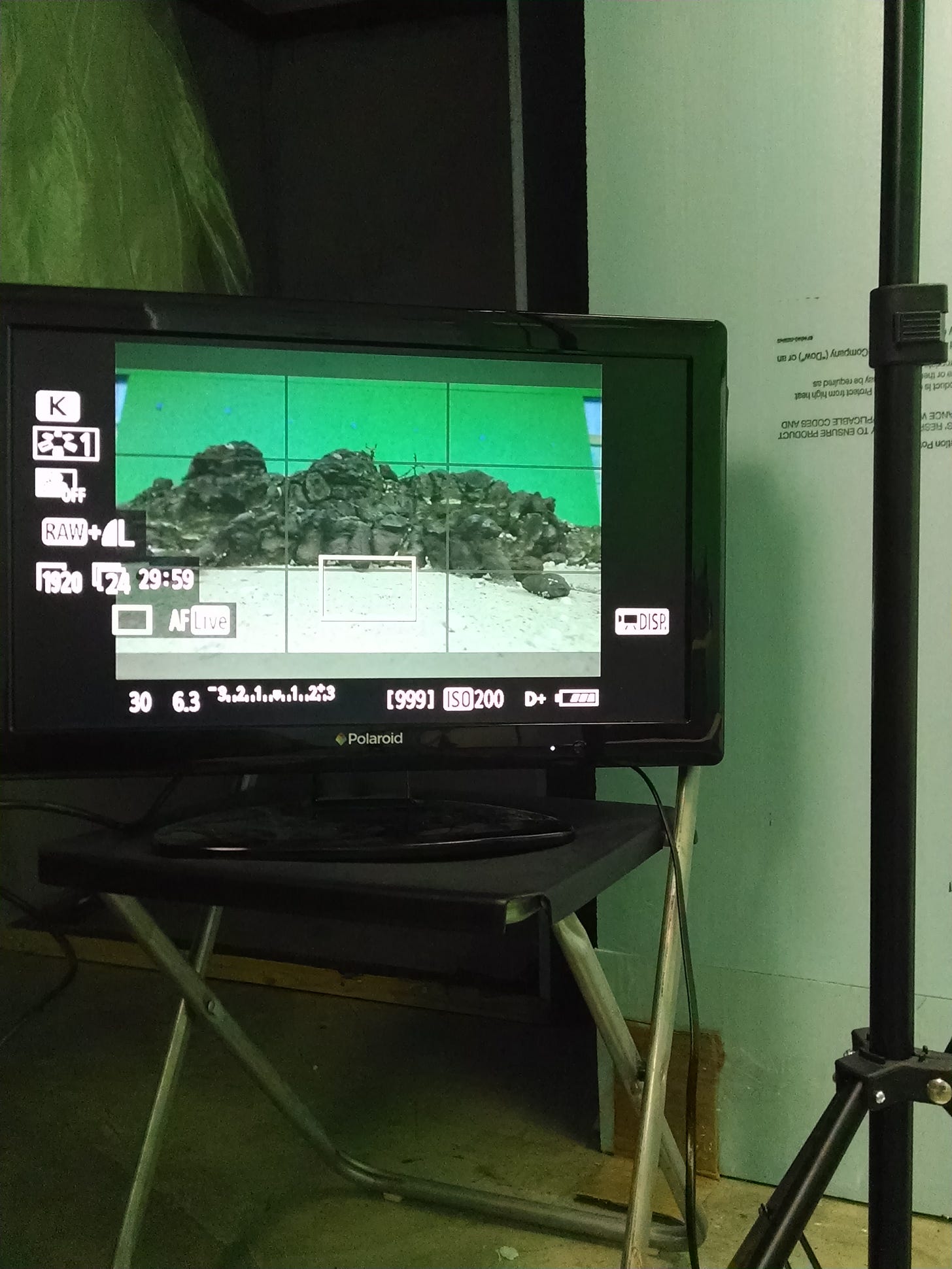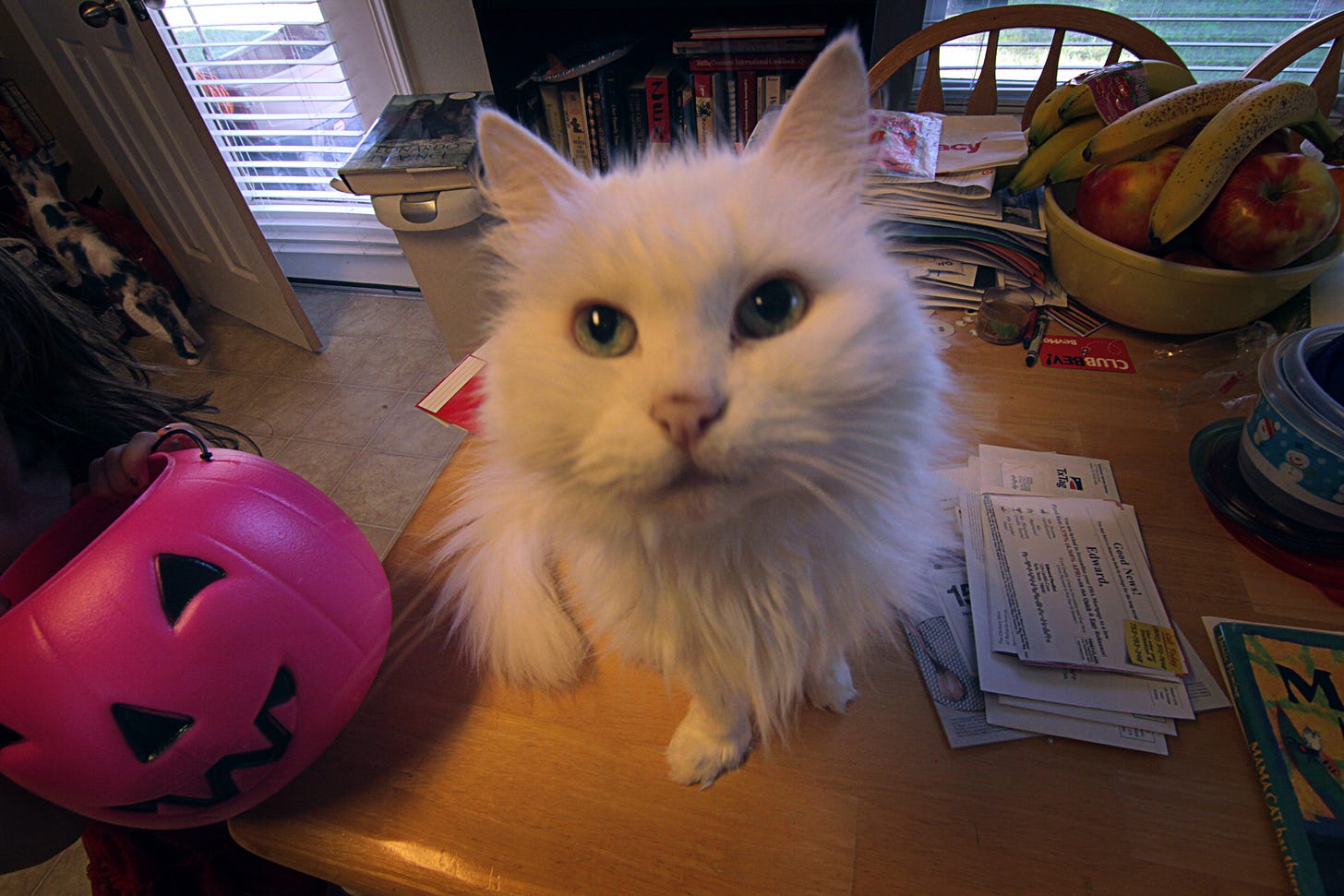Click Here To Watch The Quantum Terror.
In part two of this series, I left off by talking about the miniature tunnels and landscapes created by Heather Lowe, for my movie. The special effects were as much a character in this movie as the actors would play themselves and in order for the story to be successful, they had to work together just like the cast does with each other. This was a new experience for them and although they found it exciting there were times when they weren’t always sure what I was trying to accomplish because the end result would not become apparent until it was brought into post-production. With Heather’s work, this was particularly an issue because they would be captured separately at a later date and composted in where at the time, they would only see a green screen.

For this reason, I’ll be coming back to those miniatures later, as I think first we have to give the actor’s on-set experiences more context.
On Set
Being on any movie set with practical effects, no matter what the budget, is an unusual experience because most of the time you see them for what they are, inanimate materials that pose no threat, waiting for experienced FX artists to coax a performance out of them. Often, these are also the people who built them and have worked out with the director how to light and frame them so that for a small time, within the frame, they appear to come alive. However, the illusion is short-lived on the day of the shoot. The cast has to work just as hard to sell movie-goers on the idea that these aren’t bits of rubber but, at least in the case of a horror movie, real threats to their character’s survival.
Or, to paraphrase legendary FX wizard Stan Winston, when asked about his work in Aliens,
“Do you know why the audience believes in the Aliens we create? They believe it because Sigourney (Weaver) believes it.”
For my cast, which consisted of Kristen Cochelle, Paula Marcenaro, Matte Blackwell, Jordan Micheal Brinkman, Val Mayerik, and Dimitrius Pulido, I expect the experience of coming into a set full of handmade monsters, built in a garage, was a daunting one. Even the least seasoned among them were used to much more professionally staged productions but at the same time, they had little to no experience having to play fabricated creatures or trick photography.
Almost every time they showed up to shoot, they were subjected to playing against a green screen, having to lay on the floor with the camera tilted sideways so it looked like they were hanging onto a wall (a trick used by Dan O’bannon & John Carpenter in Dark Star), jumping to capture a split second that appeared like falling, acting in reverse with rubber tentacles, or just plain reacting to things off-camera that would be edited in, later. I believe it must have taken an extraordinary amount of trust to commit to these often physically challenging scenes and believe that they would all come together in the edit.
I put them in strange costumes, asked them to be painted with strange makeup by Jenna Green, lay in rocky sand, and even partially operate the puppets they were performing with. They were all troopers.
Lovecraftian Tentacle Monsters
Even way back when I conceived of The Quantum Terror I was already tired of slasher and zombie movies. Not that I don’t love a good one from either genera but the truth is we were getting flooded with cash-grab injections of them, in what felt like every other week from either studios looking to make a buck on the latest thing or indie filmmakers trying to jump on any bandwagon that would take them to Hollywood. I wanted to do something that would be unique in the horror movie space, or at least rarer. The idea of mutating, amorphous creatures appealed to me on a number of levels. I wouldn’t have to worry about the audience seeing the monsters as actors in rubber suits. They’re horrifying in their undetermined shapes, which is just really cool. I could have a variety of designs and sizes that wouldn’t require a commitment to anatomical details, and they could be built out of relatively affordable materials that weren’t hard to acquire.
One of the biggest influences on my filmmaking, director John Carpenter, along with special effects legend Rob Bottin had paved the way for such creatures in cinema with The Thing but very few filmmakers had followed suit since, and what did come after didn’t have an impact on the zeitgeist like zombies and slashers have. I could maybe count those movies on one hand, the 1980s remake of The Blob, Species, and Phantoms, the latter two both featuring inspired “garbage bag monsters” by Steve Johnson and Billy Bryan. Of course, what really spurred me in this direction, at that moment was studioADI’s movie Harbinger Down, a homage to The Thing that director Alec Gillis decided to do after he and his partner Tom Woodruff, Jr’s work on that movie’s prequel was painted over by CGI. Frequent readers of my blog will know that I helped out with that movie and as a result, Tom and Alec agreed to let me reuse some of their far more professional tentacle work from their movie on my own.
I had no idea at the time that Stranger Things would soon hit the scene after I started production and become a sensation, not to mention David Lynch’s return to Twin Peaks, which ended up paralleling a lot of the themes I was working on, story-wise. All the better for my movie, I think, as it shows that there really is an audience for these kinds of stories.
Jenna and I were working on these creature designs long before those two shows broke into the scene in the 2000-teens but we were excited to see that other people who took inspiration from the same places we did were sparking a renewed interest in Lovecraftian or otherwise weird horror on the screen.
Using everything from packing tape, latex, Sculpy, fabric, glass, bones, wire, and friendly plastic, we conjured our nightmares into being.
Miniatures and Rod Puppets
Like I said before, with these kinds of monsters in our movie, we could build at any size, which gave us a lot of control over how they interacted with their fictional environment. If we wanted to have a large creature inhabiting a tunnel, it just wouldn’t be in our means to do it full size. Aside from the money it would take to create such horrors, we’d also have to budget for a crew to manage it, as well as needing more space for all of those people. I definitely couldn’t fit them all in my garage. A low-fi approach to the problem was called for.
Not that we wouldn’t have used puppets on a higher budget, mind you. As I’ve said before, I was in love with the miniature effects of the Alien franchise, especially the movement (although, not the execution) of the rod puppet in Alien 3. The prospect of getting together with Jenna and Heather, and having them build a one-quarter scale tunnel system full of monster puppets with me sounded like a party. Heather took on almost all the miniatures and one puppet while Jenna and I designed and constructed the rest.
Miniatures allow for a lot of flexibility in other ways, as well. Our tunnel sets were extremely small. Run a few feet, turn a corner, and that’s as far as you could go. We extended them a little by just having the actors move through them again and again, making it seem like they were traveling a much greater distance but we needed to expand the scope. The solution was to create a visual language through the edit where characters would look at something and then we’d see their point of view, much like in Silence of the Lambs. I made sure that early scenes in the movie cut to a character POV long before we needed to do a shot/reverse shot between an actor and a miniature so that the audience would get used to it as part of our visual vocabulary. That way people wouldn’t think twice on whether they were looking at a set or a miniature.
As you can see from these photos, Heather did a great job of matching our full-size sets, which left Jenna and me free to populate them with nasty, inhuman characters, or in one case, send a torrent of water flooding through. There was no way I could flood a flimsy set in my garage without causing massive property damage, even if I did have a way to dump tons of water into it.
Even with scale models allowing us to expand the scope of our story’s setting, we didn’t have limited resources or space to build the vast network that we wanted to portray. In fact, if memory serves, only two tunnels were built, once that was a strait corridor and the other a corridor with an opening on one side that the first could fit into, creating a T-shaped intersection.
For scenes where the tunnel needed to seem to just stretch out into the dark, I painted a forced perspective plate that could be placed over the opening of one side of the miniature that would for the most part line up with the camera lens at the other. This effect had varying results under scrutiny but in quick cuts with the camera moving, you would never know.
This video has one of my favorite shots of the miniature and forced perspective gag, blended together.
For the scene where our heroes must descend deeper into the labyrinth via a vertical tunnel, I once again used the same quarter-scale tunnels, but placed an extra piece of wall, with a hole cut in it, to make an opening that would butt up against the vertical miniature. I used a rather bombastic piece of editing to establish the otherwise dead end and then cut to the actresses coming to a stop at it in a panic. However, you’ll notice that you never see them and the opening in the same shot because I didn’t have a full-size equivalent of this for them to act in front of.
I could only have them dip down below the camera line and then cut to another shot of the camera looking down into the miniature, as exampled here.
I composited everything else using green screen. The actors all did a lot of work against a green backdrop and then the miniatures were shot the same way, keyed, and put together in the computer.
Stay tuned for part four when I’ll be talking more about post-production and visual effects.
Click Here To Watch The Quantum Terror
Did you miss part one? Read it, here:
Be sure to follow me on my other social media...
Substack:
Facebook: https://www.facebook.com/ChristopherMoonlightProductions
Instagram: https://www.instagram.com/christophermoonlight MeWe: https://mewe.com/group/618fd8faf6f4df6686383749
Reddit: https://www.reddit.com/user/ChristopherMoonlight
Bitchute: https://www.bitchute.com/channel/7Xtj2DvclqeN/
Minds: https://www.minds.com/Christopher_Moonlight/
Rumble: https://rumble.com/c/c-966257
Watch the trailer.
Click Here to see our merch.
Post Script:
I’d like to dedicate this post to our family cat, Abigail, who passed away while I was writing this article.
I gave Abigail to my wife as a birthday gift before we were even engaged. She’s been with us our entire marriage and our children have never known life without her. She was a whopping twenty-two years old. No small feat for a cat.
While shooting The Quantum Terror the cast got to know her and at one point a strange occurrence happened during filming. Lead actress Kristin Cochelle saw her outside of the house, so, thinking she had escaped, she picked her up and brought her in, only to find that Abigail was already inside. It was another cat that looked exactly like her. That all blew our minds a little bit, considering that the theory of “Schrödinger's cat” is a big part of quantum mechanics. If you know, you know.
Rest in peace, Abigail. We really did love you and are going to miss you a lot.






